The Lowdown
If you’re coming from a pod coffee brewer and want to up your coffee game, the Tchibo Bean-to-Brew Coffee Machine is a solid choice. It brews espresso and coffee with a couple of button touches, and the results are quite good! Freshly ground coffee from the same machine that is brewing your coffee is much more convenient than having to grind your beans each time.
Overall
Pros
- Single servings without needing wasteful and expensive pods
- Freshly ground beans each time you make a new cup of coffee
- Compact and attractive design
- Easy to clean
- Easy to operate
- You can hit the Boost button if you want a stronger brew
- An expandable coffee hopper option is included
- The brewing unit is small and simple to remove and replace for cleaning
- The brewed coffee tastes great
Cons
- The smallish water tank located on the back of the Tchibo is a pain point, as it means having to move the machine every time it needs a refill
- The small leftover water tray needs to be emptied daily, even if you are only making a few cups
- There are no warning lights when the water tank is empty or the coffee grounds bin is full — check them regularly
- The magnetic drip tray detaches easily when the machine is moved
- Grind setting can only be adjusted when it is actively grinding
Are you tired of using expensive, wasteful individual coffee pods or drinking stale java that was made hours ago and left to stew? Has your coffee maker got you wishing for something closer to the ‘fresh ground for every cup’ experience found at your favorite coffee shop? Brewing with Tchibo is as straightforward as adding your coffee beans, selecting your desired portion, and pressing “start” to enjoy a cup of fresh and aromatic coffee every time. Skeptical if the Tchibo can create the flavorful and fresh coffee you desire, complete with the perfect crema, right at home? Let’s find out together!
Tchibo (pronounced chee-bow) is a German company that started roasting beans in 1949 to sell by mail order; the name Tchibo comes from a combination of one of the founder’s last names, Tchiling Hiryan, and the German word for bean, Bohne.
In 1953, Tchibo started selling coffee directly to customers from the side of their Hamburg factory; in 1955, they opened their first store so customers could try their coffees before buying, and by 1958, Tchibo Gold Mocca was Germany’s top-selling coffee. By 1991, they were the number-one coffee house in Europe, and in 2016, they created their first one-step coffee machines with several styles currently available in Europe.
This brings us to 2023 and the Tchibo Bean-to-Brew Coffee Machine, the brand’s only all-in-one coffee maker available in the United States. Like the Philips 3200 LatteGo Automatic Espresso Machine Perry reviewed, and which I’ve been using since 2020 or so, the Tchibo has a sealed hopper that holds coffee beans for grinding when you are ready to brew a cup of coffee. Since the Tchibo doesn’t froth milk, there is no latte or cappuccino option at the touch of a button.
What the Tchibo does is make espresso or coffee in two sizes and varying strengths — that’s it. If you occasionally want a cappuccino or latte, you can buy a separate frother.
Included in the box are the Tchibo Bean-to-Brew Coffee Machine, a 31.5″ power cord, a coffee bin extender and cap, a cleaning brush, and some paperwork that includes Tchibo tips, a notice that I had received a fully tested and functioning refurbished unit, and some simple instructions directing me to the website for the user manual and product registration.
A Walk-Around the Tchibo Bean-to-Brew Coffee Machine
The Tchibo measures a pretty compact 7.1″ wide by 15.7″ long by 12.4″ tall without the coffee bean extender installed (with it, it is 14″ tall), and it weighs about 18 pounds. The machine is primarily skinned in matte and shiny black BPA-free plastic with flashy chromed edges on the front.
The Tchibo looks attractive and non-intimidating (cock-eyed water tank top in this photo notwithstanding), so I give it props for that.
On the left side, there is a removable plastic cover that lifts to reveal the brewing unit. On the upper right, there is a power button.
The small brewing unit has an orange pinch button on each side so it can be removed and cleaned.
The back has a port for the power plug.
The right side is plain.
The drip bowl has a stainless drip guard that sets inside, and the whole unit attaches to the front of the Tchibo magnetically; I thought this was clever initially, but it is rather easy to knock askew.
As the machine has to be pulled out and moved each time the rear water reservoir needs refilling, you’ll quickly learn to remove it before doing so, or you’ll keep knocking the drip bowl off.
Removing the drip bowl reveals the leftover water tray and the coffee grounds container tucked into the bottom front of the machine.
I’ll admit that I am a little suspicious of the small size and shallow sides of the leftover water tray; I’m used to something much larger on the Philips (which, to be fair, is also a much wider machine), but we’ll see how it goes.
The 37.2-ounce water tank is located on the top rear of the Tchibo, which means the coffee machine has to be pulled out from under the cabinet each time it needs refilling. I realize that placing it in the rear allows the coffee maker to be much slimmer than most all-in-ones, but the tradeoff is that filling it isn’t very convenient.
Considering that 37.2 ounces only makes about 4 cups of large coffee, I anticipated it needing to be filled regularly, and the water tank’s small size would indeed turn into a pain point.
- There is a removable filter pre-installed in the water compartment.
As shown in the second photo of the gallery above, there is a filter in the water tank that should be removed weekly to remove limescale and other deposits. To do this, you’ll
1. Pull the filter up and out.
2. Rinse it off under running water.
3. Then reinsert it in the opening of the water tank, pressing it in as far as it will go.
The grind adjuster is located in the gently sloped coffee bean compartment, which holds 5.6 ounces of beans without the extender.
Adding the included extender raises the coffee bean compartment’s capacity to 10.6 ounces, and it comes with its own sealable plastic cover. Since I drink four to five cups of coffee throughout the day, I went ahead and installed the extender and cover.
Using the Tchibo Bean-to-Brew Coffee Machine
Tchibo was kind enough to send three different coffees for me to try, including their Barista Caffé Crema, the Privat Kaffee Latin Grande, and the Exclusive Medium Roast.
I figured I couldn’t go wrong with the Barista Caffé Crema, so I loaded the hopper with it. Rookie mistake!
Grinder adjustments can only be made while the grinder is operating, so it’s best to add a more conservative amount of beans so the grinder adjustment knob is still exposed. That way, for the first few cups of coffee, you can adjust the grinder settings to your liking after trying one or two cups after each adjustment.
It’s worth pointing out that just like every other all-in-one coffee machine I have ever used, including a De’Longhi Magnifica (it lasted for about 10 years before finally dying), the Philips LatteGo (still going strong), and now the Tchibo is that you should never fill the coffee bean compartment with beans that are carmelized or sugar-coated, oily, unroasted (green coffee beans), beans mixed with raw coffee, or loose coffee powder; doing so will damage the machine.
There, I have placed it in bold, so you can’t say you weren’t warned!
I’ll admit that all coffee beans look slightly oily to me, even the ones from Tchibo, so I am not sure what the level of oiliness would have to be to cause an issue, but I would assume this is something you can run into when trying to use heavily flavored coffee beans from some brands.
After removing a good portion of the beans after my rookie mistake, I was ready to make my first cup.
When you first power on the Tchibo, a blue rinsing/hot water button will flash as the heating process starts.
When the water has heated, the machine will release some preliminary hot water to clean the dispenser. Assuming you have the magnetic drip bowl and stainless drip guard properly in place, there will be some steam but no splatter. Once the cleaning process has finished, the Tchibo is ready to make your choice of coffee.
If you’re a fan of pre-heating your cup before dispensing coffee, which is supposed to help it taste its best, with the machine switched on, you can press the rinsing/hot water button, and about 1.7 ounces of hot water will be dispensed. You can swirl the water around your cup and then toss the water into the sink before you start your brew.
Okay, let’s make some coffee!
When the Tchibo is ready to brew, five icons will glow; from left to right, they are Espresso (factory set at 2 ounces), Regular Coffee (factory set at 6 ounces), Large Coffee (factory set at 8 ounces), Coffee Boost, and the hot water indicator. Each can be pressed for various functions, which we’ll now explore.
Let’s start with an espresso. When you press the espresso button, the other buttons will darken, showing you your selection.
The coffee grinder makes a whirring and grinding noise that may seem loud if you’ve never had a fully automatic coffee machine like this before, but it isn’t excessive compared to the other models I have owned.
Something I haven’t seen before on any of my coffee makers is an LED light located on the adjustable dispenser that beams directly on your coffee as it is brewed. This seemed a little silly initially, but I have come to love this feature.
When the Espresso brewing process has been completed, all the buttons glow again, indicating that the Tchibo is ready to make another coffee.
I’ll be the first to admit that I haven’t been an espresso fan since I was in college many moons ago; this espresso tasted strong, and it had a nice crema, but I probably won’t be trying it again. We all have our preferences, right?
Next, I tried the Regular Coffee. At home, I generally drink my coffee black, and with the added hot water, the Barista Caffé Crema tasted great.
As you can see, there was a nice crema, and the flavor was excellent. However, when I eyeballed it, the amount in the cup didn’t seem to be quite 6 ounces.
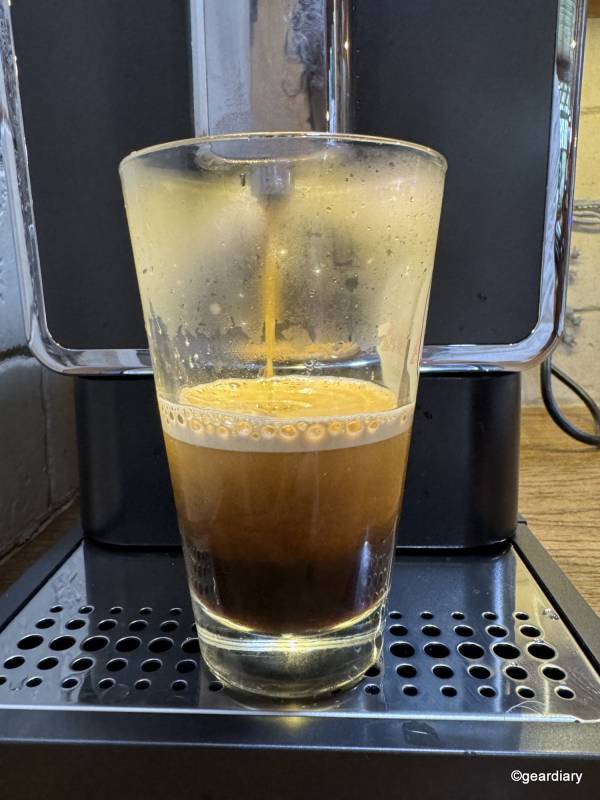
Notice how the LED light highlights what is happening in your cup when using a clear glass, though? It’s a nice touch.
And finally, I tried the Large Coffee, which was only a little more coffee in the glass and didn’t seem to be a full 8 ounces.
Curious about whether my eyes deceived me, I removed the drip pan and pulled out the leftover water tray and coffee grounds container. Ummm, this is not what I am used to seeing. =/
So, the first thing I did was do some simple maintenance. Since I had removed the brewing unit for photos, I figured it was possible I hadn’t reseated it perfectly. I opened the brewing unit cover and removed it to expose the unit.
You can see that there is a bit of coffee spillage around the brewing unit holder, so I cleaned that out and rinsed off the brewing unit, then replaced it.
I started the brewing process again.
This time with a Small Coffee. Sure enough, it was only making four-ounce cups. Trying again with the Large Coffee, I found it only brewing slightly over 6 ounces. Why so stingy?!
Adjusting the Size of Your Cofee on the Tchibo Bean-to-Brew Coffee Machine
It’s an easy fix, though, as explained by this video.
I brewed another regular-sized coffee, and after the grinder had stopped, I held the Regular Coffee button until the cup hit 6 ounces; my new regular coffee level had been set.
I did the same process to adjust the amount of coffee dispensed when pressing the Large Coffee Button; my new large coffee level was set.
I planned to brew yet another set of cups to test that the process had worked. Plus, I wanted to see if my coffee pucks were looking any better and if I was still losing so much water to the leftover water tray and coffee grounds container. The coffee pucks looked better, but they were still a little soupy. Hm.
I should mention that if the Tchibo is turned on and you remove the leftover water tray, a warning light showing the coffee grounds container will glow.
The same will happen if the machine is plugged in and turned on and you remove the water tank.
The Boost button is useful if you prefer a stronger cup of coffee. To use it, you’ll press the coffee bean button, which will flash, indicating that Boost is ready. Then you’ll press the desired coffee button to start the grinding and brewing process. Using the Boost button adds more beans to the preparation, so if you want a stronger brew, this option is for you.
After adding more water and replacing the components (and planning to drink this one), I brewed a large coffee by pressing the Boost (bean) button first and then pressing the Large Coffee button; everything worked as expected!
I should mention that if you want a slightly larger and stronger cup of coffee at any time, you can brew your regular or large-size cup and then add an extra 2-ounce shot of espresso to your cup.
After testing the Small Coffee and finding that my new setting has also worked, I checked the pucks again. This time, there was much less water in the coffee grounds container, and the newest pucks looked more like what I expected.
After making coffee, the Tchibo will switch into standby mode if you don’t press the button to turn it off. In contrast, in standby mode, the machine will use very little energy, but it will be ready to brew with the touch of a button if you have a housemate who also wants a cup or you might want another after your first.
After ten minutes, the machine will automatically switch itself off, but you can adjust the standby mode length to 10, 20, 30, or 120 minutes before it automatically turns itself off.
Tchibo Bean-to-Brew Coffee Machine Maintenence
The Tchibo requires periodic maintenance, roughly at this schedule:
| Daily | Weekly | If Required | |
| Casing | X | X | |
| Clean the water tank | X | ||
| Rinse the water tank | X | ||
| Filter | X | ||
| Coffee grounds container, leftover water tray, drip bowl |
X | X | |
| Brewing unit | X |
Other than the two warning lights I mentioned, others will pop up when their respective parts require maintenance.
Refilling the water tank and emptying the coffee grounds only show up when their respective components are missing, and the machine is turned on, which feels like a missed convenience as it would be nice to know if you needed more water or needed to empty the coffee grounds when those services need to be performed.
Otherwise, the accompanying warning lights should come in handy when it is time to perform maintenance on their respective items.
Pain Points When Using the Tchibo Bean-to-Brew Coffee Machine
The water tank on the Tchibo is small, especially if you are a heavy coffee drinker or there are other coffee drinkers in your household. Since I do have to pull the Tchibo out from its spot under the overhead cabinet several times a day to access and fill the rear water tank, I’ve become a bit irritated with the four non-slip feet that are on the bottom.
Theoretically, they’re great, as they keep the machine firmly in place.
But because they grab the counter as I’m trying to move the machine around, which can cause the magnetic drip bowl to detach, I feel like something a bit less grippy on the countertop might be a better option.
I don’t want to place a mat under the machine, but I have considered putting 1″ furniture sliders on the feet to make the Tchibo move more easily since this is a regular necessity.
Smaller annoyances include that when the tank’s water level is too low to brew or finish brewing your cup, the machine will stop, but a warning light will not appear. A warning light won’t appear when your leftover water tray or the coffee grounds container is full, either.
I try to remember that after brewing four cups of coffee, the water tank must be filled, and the leftover water tray should likely also be emptied, so this is a daily thing to keep in mind.
Should You Buy the Tchibo Bean-to-Brew Coffee Machine?
I don’t want you to think that the few gripes that I have against the Tchibo should be taken as reasons not to buy one. The machine is so attractive and compact that if you have a powered island in your kitchen or higher cabinets than mine, moving it for water refills might not even be an issue. After the few bumps I documented in the early set-up process, the Tchibo has been a solid performer.
If you’re coming from a pod coffee brewer and want to up your coffee game, the Tchibo Bean-to-Brew Coffee Machine is a solid choice. It brews espresso and coffee with a couple of button touches, and the results are quite good! Freshly ground coffee from the same machine that is brewing your coffee is much more convenient than having to grind your beans each time.
The price, especially when the Tchaibo is on sale, is quite reasonable, having come from two other all-in-ones that cost substantially more, though they also offer milk-frothing capabilities.
Finally, there are extended warranties available for 2 years (60.99), 3 years ($78.99), and 4 years ($97.99) when you buy from the manufacturer.
The Tchibo Bean-to-Brew Coffee Machine sells for $531.98 (on sale for $378.98 from Tchibo at the time of this writing with two bags of Tchibo coffee included); it is available directly from the manufacturer and other retailers, including Amazon (with up to three bags of coffee included for $399.99).
Source: Manufacturer supplied review sample
What I Like: Single servings without needing wasteful and expensive pods; Freshly ground beans each time you make a new cup of coffee; Compact and attractive design; Easy to clean; Easy to operate; You can hit the Boost button if you want a stronger brew; An expandable coffee hopper option is included; The brewing unit is small and simple to remove and replace for cleaning; The brewed coffee tastes great
What Needs Improvement: The smallish water tank located on the back of the Tchibo is a pain point, as it means having to move the machine every time it needs a refill; The small leftover water tray needs to be emptied daily, even if you are only making a few cups; There are no warning lights when the water tank is empty or the coffee grounds bin is full — check them regularly; The magnetic drip tray detaches easily when the machine is moved; Grind setting can only be adjusted when it is actively grinding
Update 01/18/23: Here are some current deals on the Tchibo and coffee –
- B3G$15AFFIL: Save $15 off 3+ Bags of coffee
- $25COFAFFIL: Save $25 off $100+ on coffee
- $10COFAFFIL: Save $10 off $50+ on coffee
- Get the Tchibo Bundle for $399 – Currently on sale with no code necessary

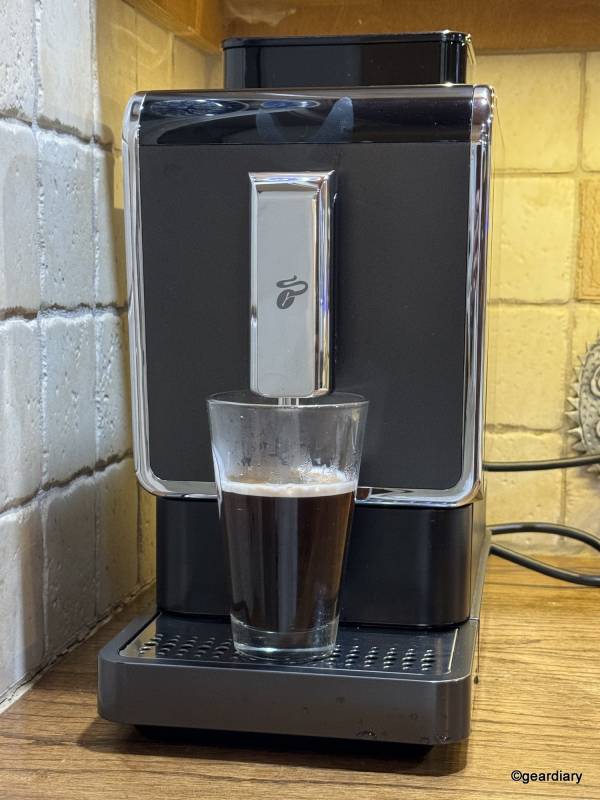
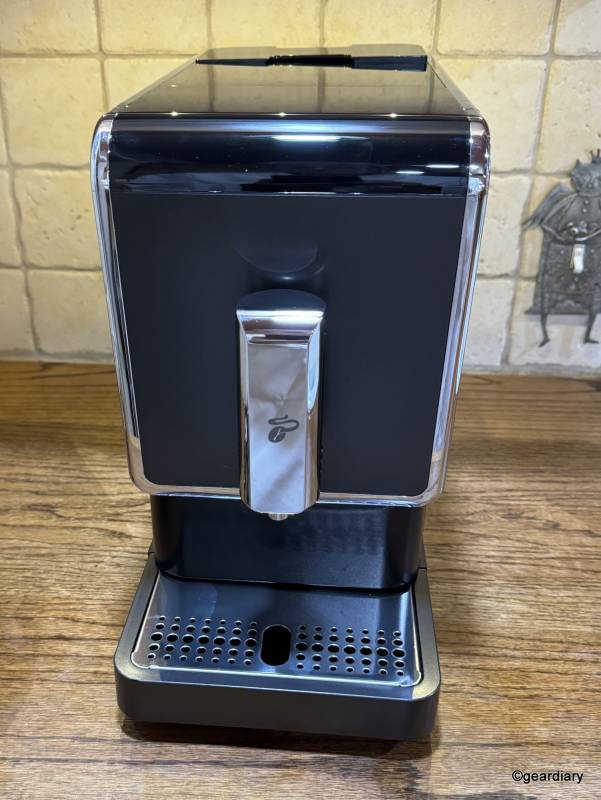
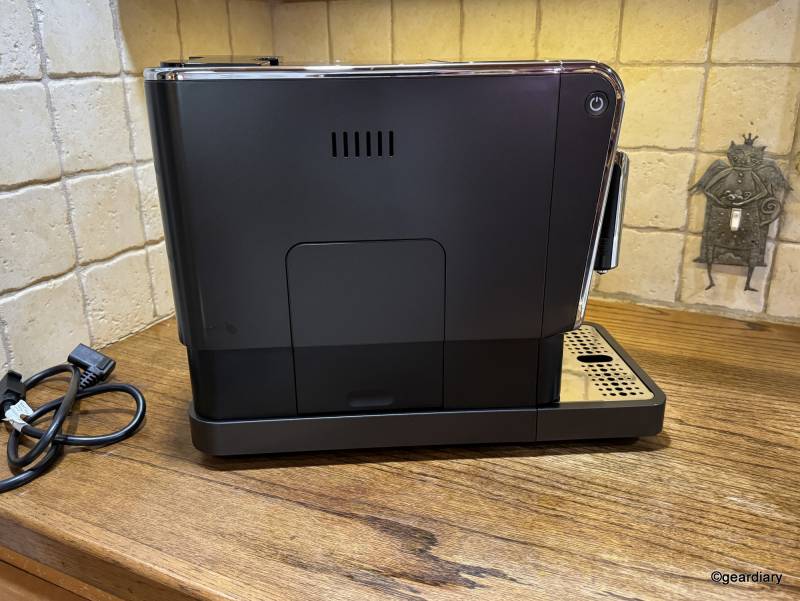
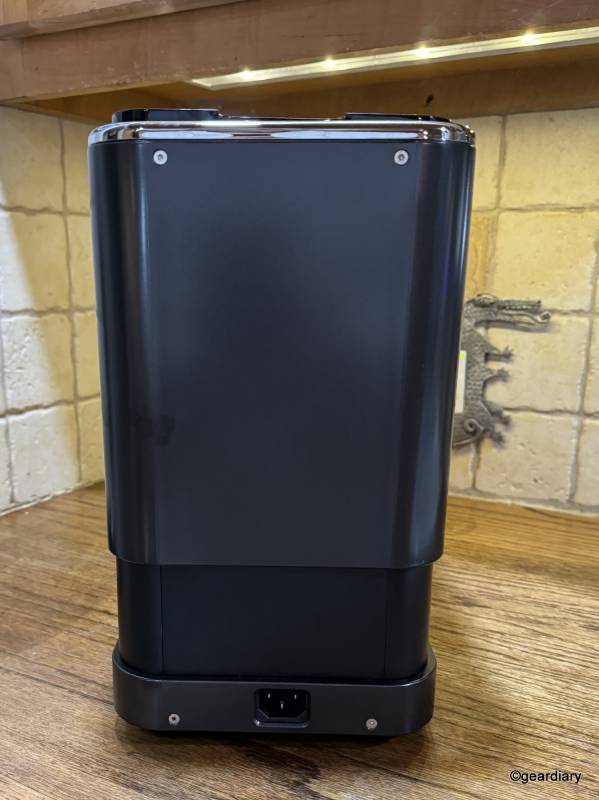
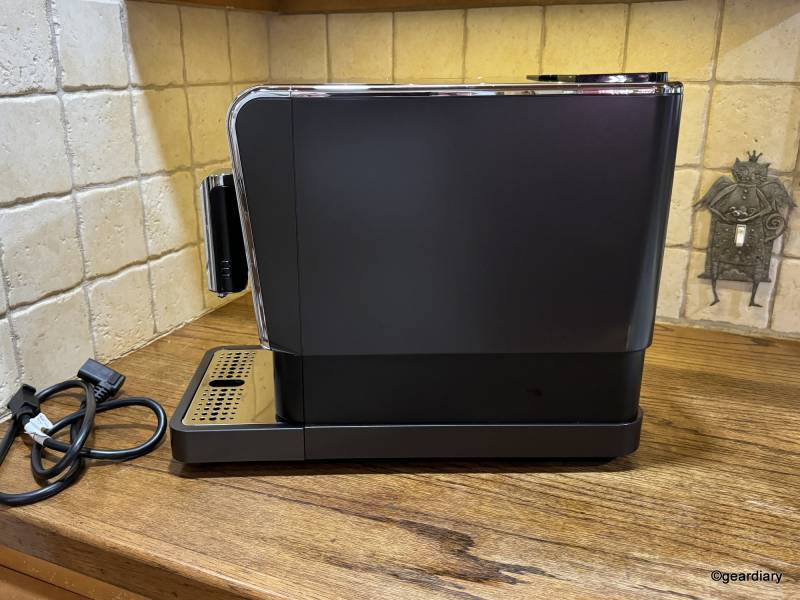
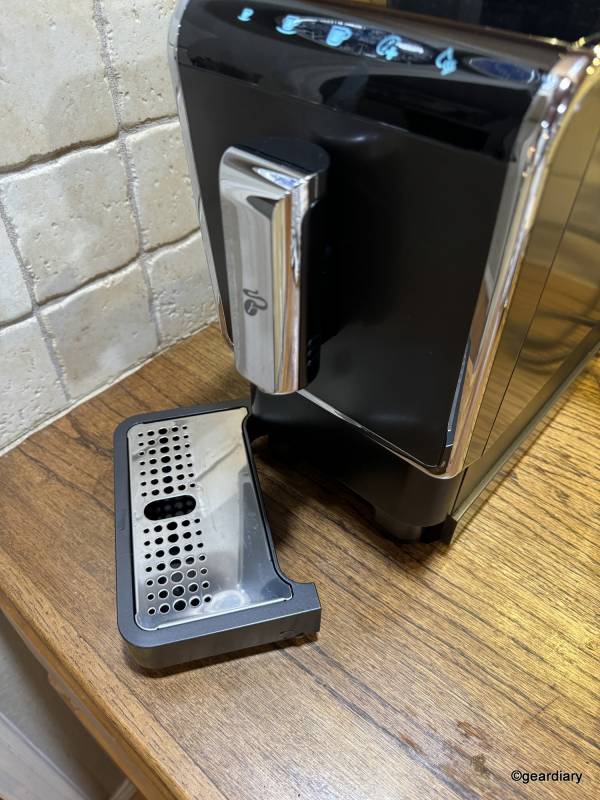
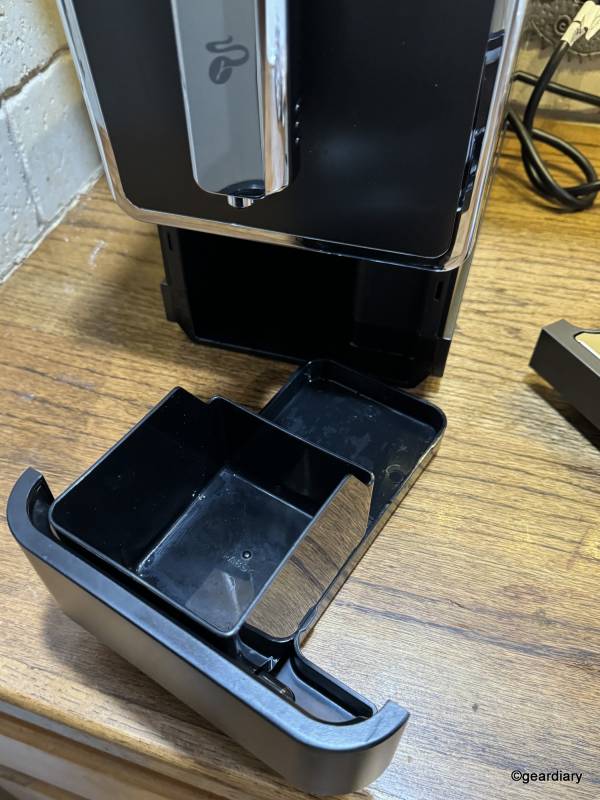



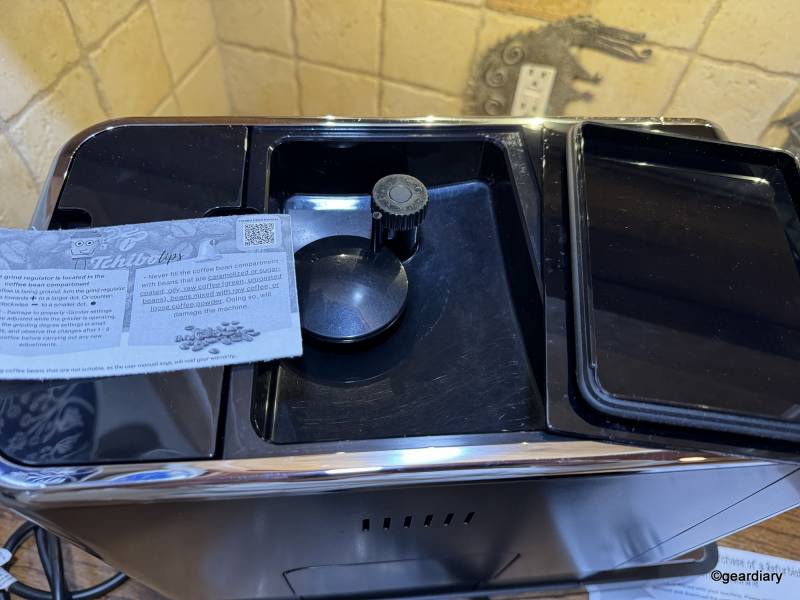
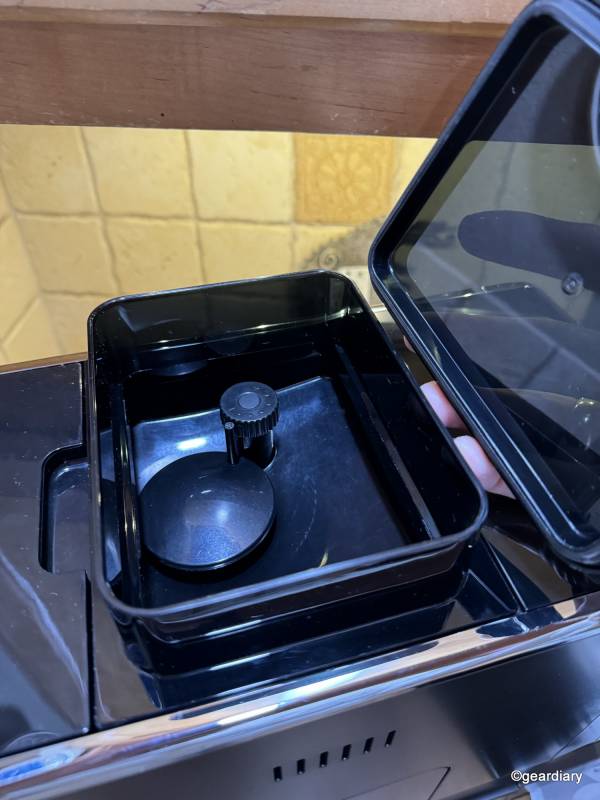
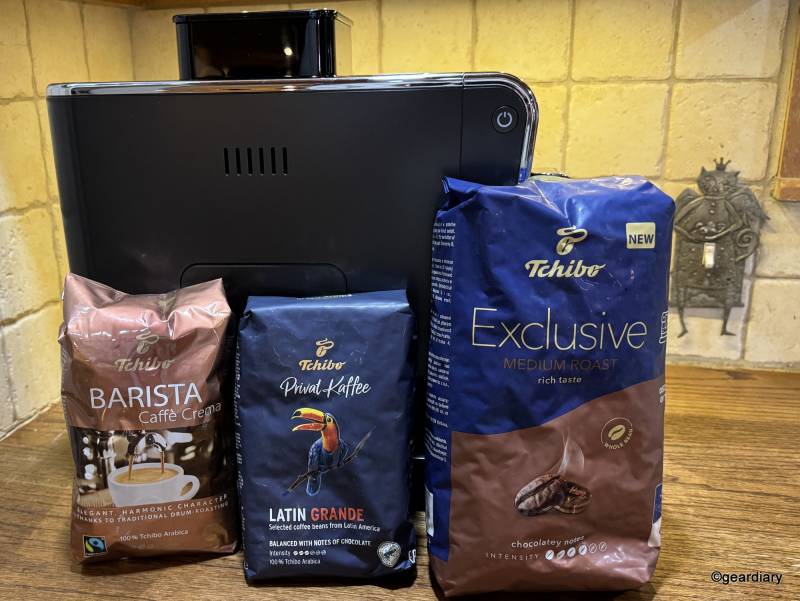
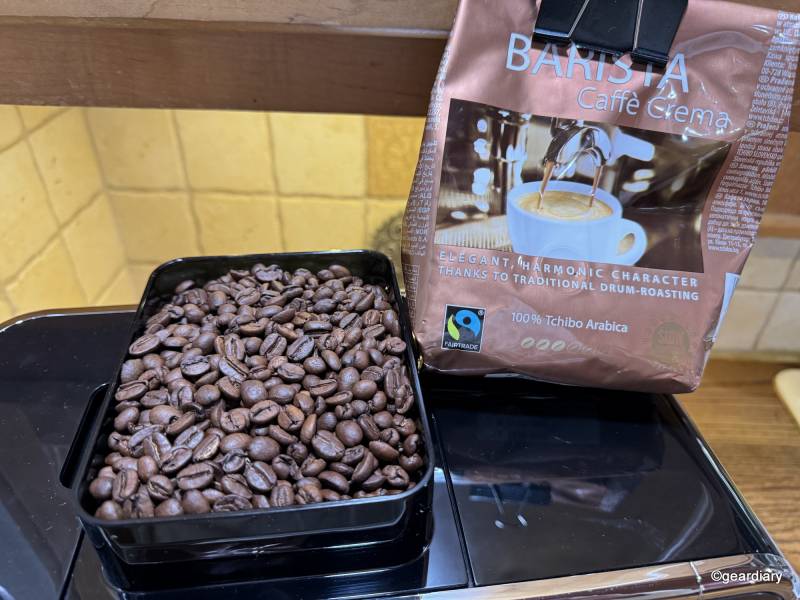


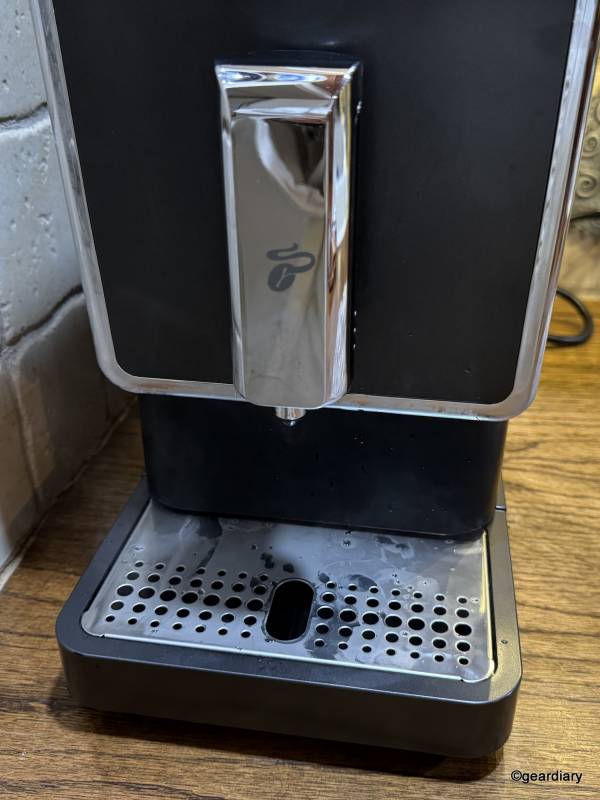
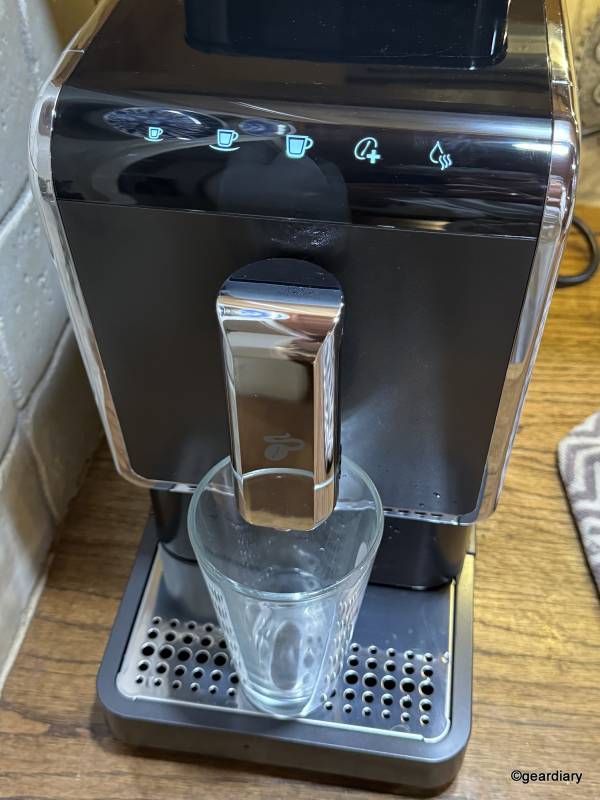
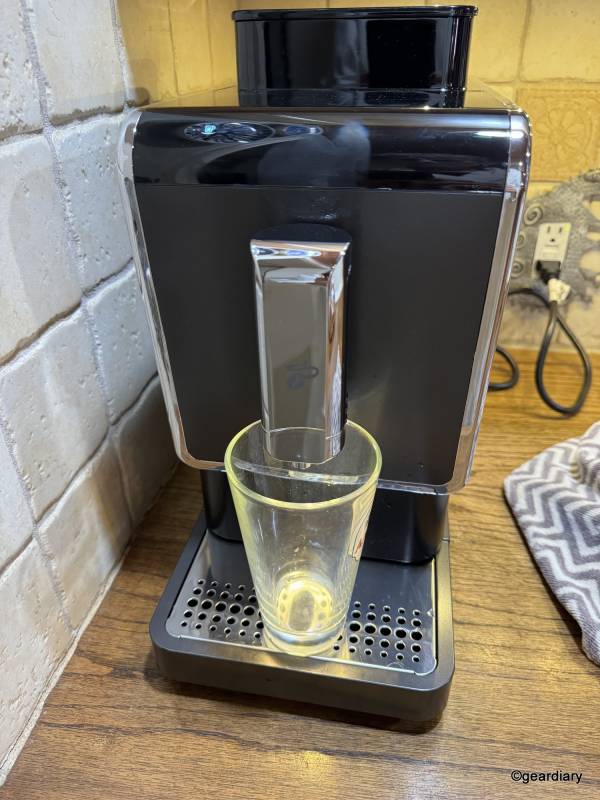

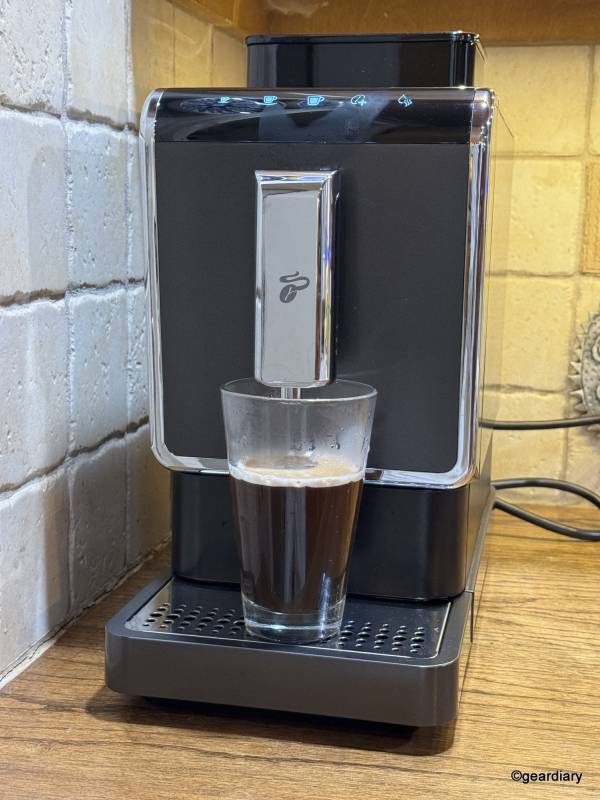

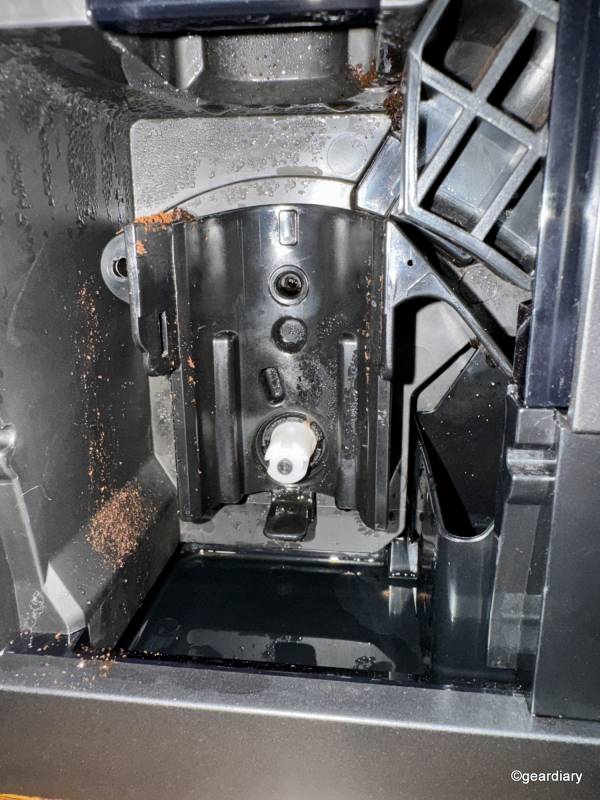
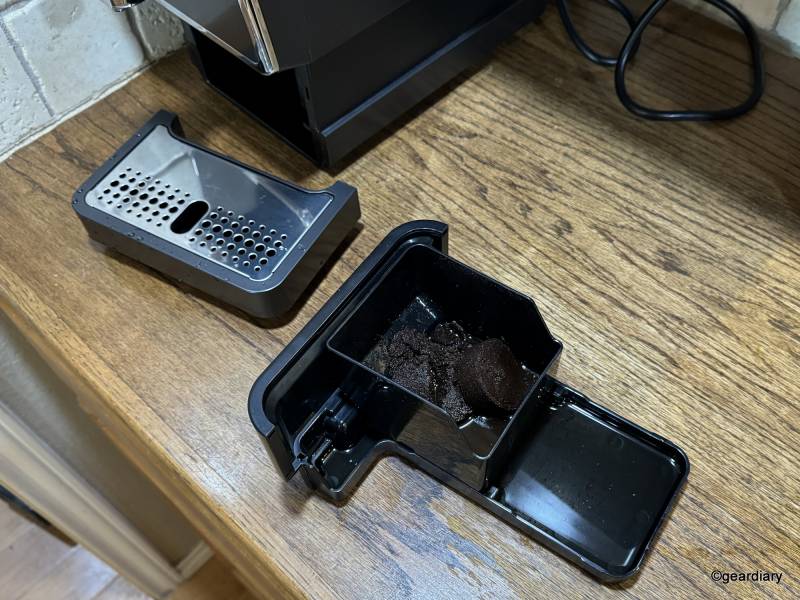
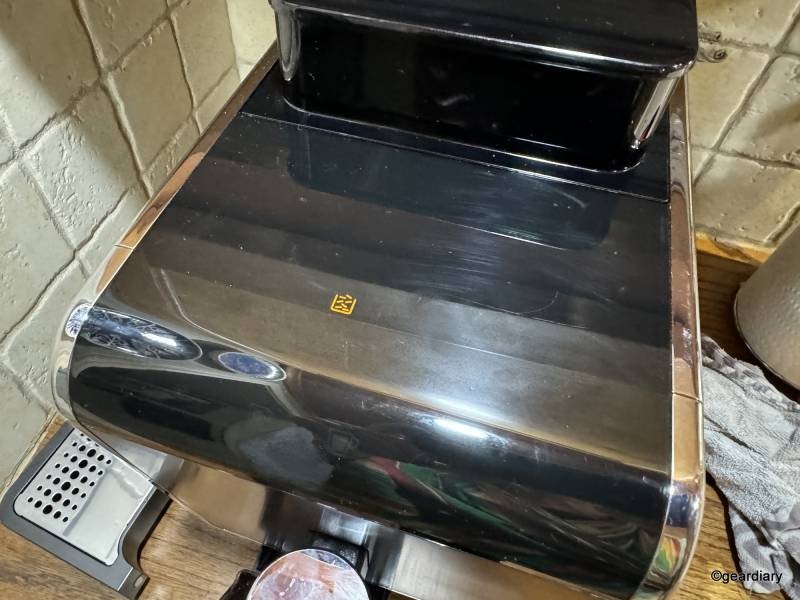
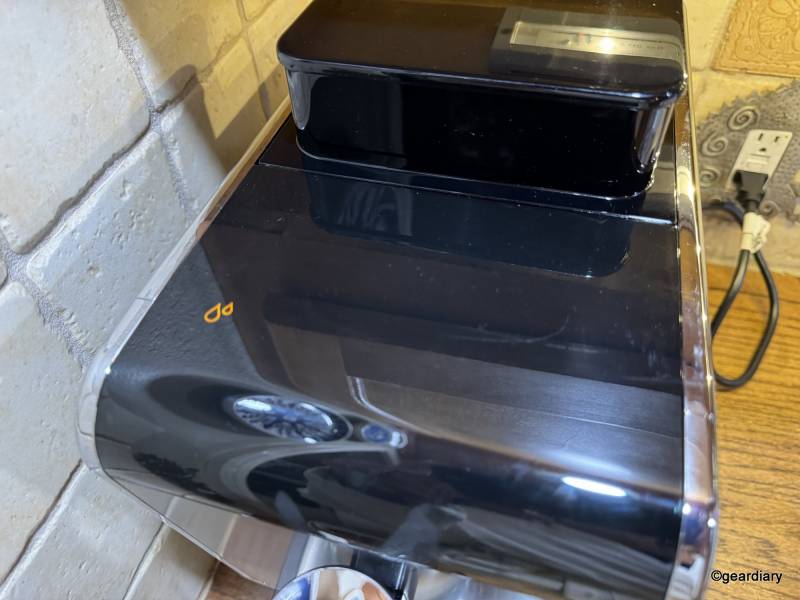

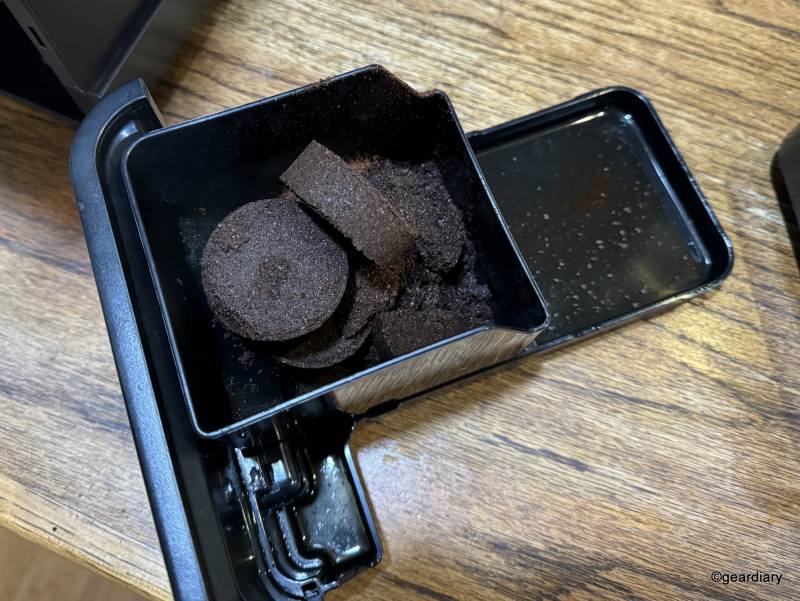
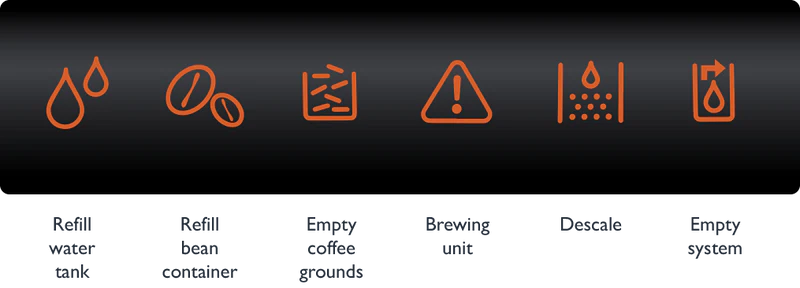
Looks interesting coffee maker . Are the Pucks after the beans are ground and used as a result of the brewing the Coffee or Espresso ? I am Currently using a Generic K Cup which I had an issue with when Someone else Brewed and openend the K Cup and poured it into the place to put the K Cup … Had to put water into the Resevoir a few times to clean it out and now it is working just fine …
Yes, the pucks produced are basically compressed ground coffee beans. You can throw them directly into the compost or use them to fertilize plants inside and outside.